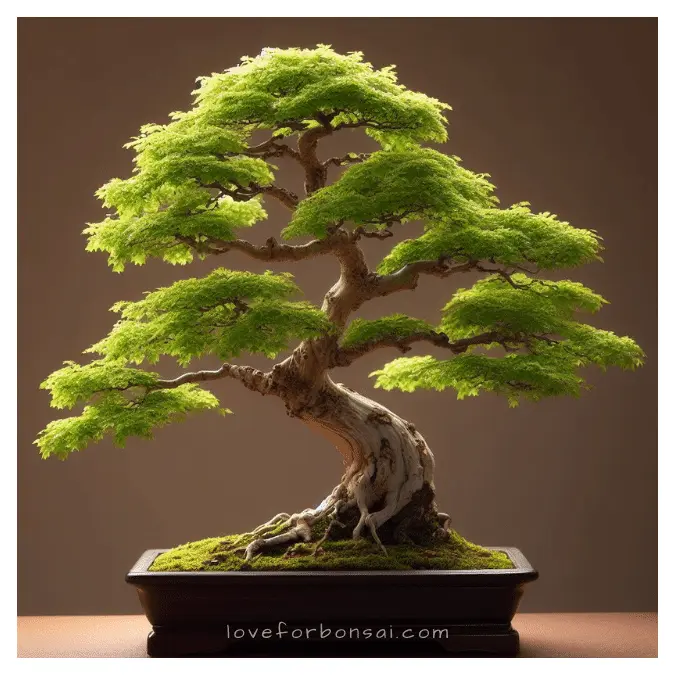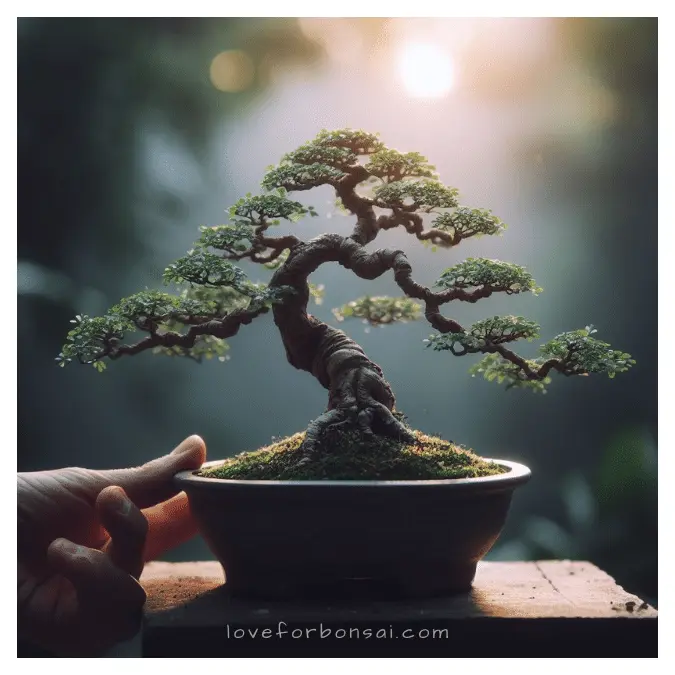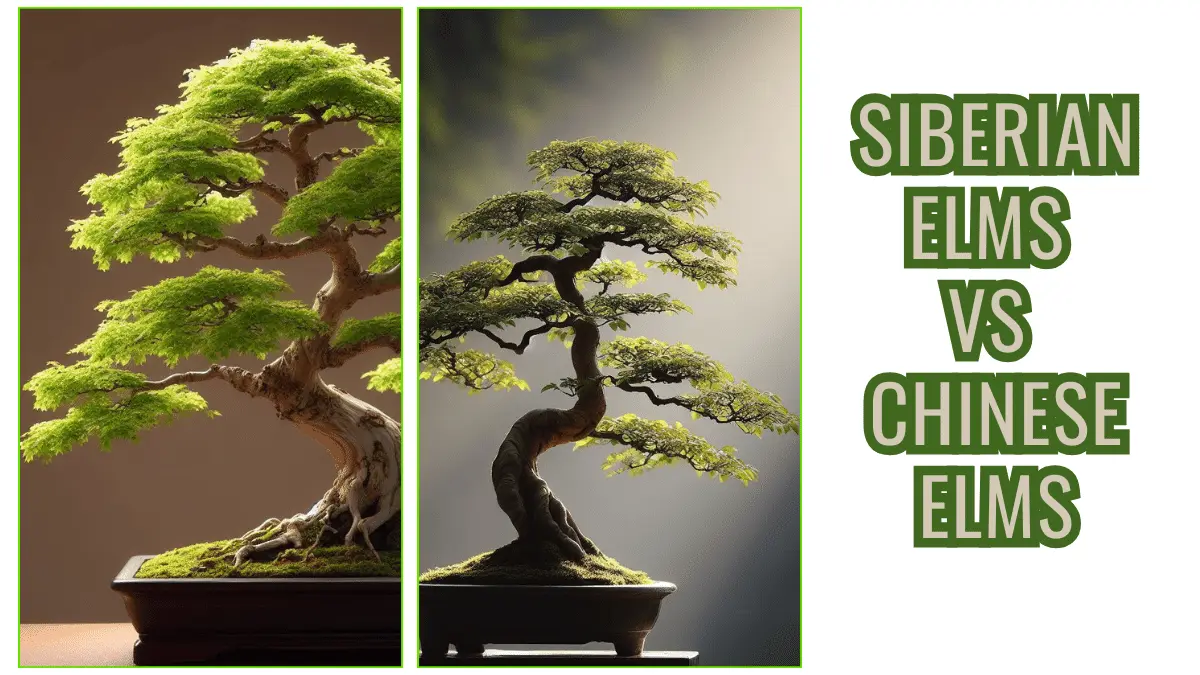Bonsai enthusiasts, whether seasoned or just starting out, often find themselves faced with the delightful choice of which tree to nurture into a miniature masterpiece. Two popular options that may catch your eye are the Siberian Elm and the Chinese Elm.
In this comprehensive guide, we’ll break down the differences between these two remarkable trees, helping you make an informed decision about which one is the perfect fit for your bonsai journey.
Understanding Siberian Elm and Chinese Elm
Before diving into the specifics, let’s get to know these elms a little better.
Siberian Elm (Ulmus pumila)

- Origin: Siberian elms hail from regions like Central Asia, eastern Siberia, Russia, Mongolia, Tibet, China, India, and Korea.
- Description: These elms grow relatively quickly, reaching heights of 50 to 70 feet and spreading out to 35 to 50 feet in width. They have a bushy appearance, greyish bark, and bright green leaves.
- Uses: Siberian elms are commonly used for windbreaks, lumber, and ornamental purposes. Folk medicine has also made limited use of them.
- Growth Tips: They thrive in rich, permeable soil with consistently damp conditions.
Chinese Elm (Ulmus parvifolia)

- Origin: Chinese elms originally come from forests in China, Japan, and Korea and were introduced to the United States in the 19th century.
- Description: Chinese elms can grow at a rate of more than three feet per year, reaching heights of 60 to 80 feet. They have smooth, thin, mottled bark that turns orange as they mature.
- Uses: Chinese elms are prized for their excellent hardness, making them ideal for various applications, including furniture, cabinets, and tool handles.
- Growth Tips: They also require pruning during the growing season and should be watered adequately.
Now, let’s delve into the specific differences between these two elms when it comes to bonsai cultivation.
| Characteristic | Siberian Elm (Ulmus pumila) | Chinese Elm (Ulmus parvifolia) |
|---|---|---|
| Origin | Asia | Eastern Asia |
| Appearance | Bushy, greyish bark, bright green leaves | Graceful, lace-like bark, deciduous or semi-deciduous |
| Uses | Commonly used for lumber and landscaping | Mostly used as an ornamental tree; leaves can be used medicinally |
| Growth Rate | Moderately fast | Fast |
| Disease Resistance | Less disease-resistant, vulnerable to pests | Highly resistant to diseases, including Dutch elm disease |
| Bark Characteristics | Rough, fissured bark with orange hue | Smooth, thin, mottled bark with orange tint |
| Environmental Adaptability | Thrives in various conditions, including poor soil | Tolerant of polluted air and less-rich soil |
| Special Features | Can be invasive in some areas, good resistance to Dutch elm disease | Unique weeping branches, drought-tolerant, comes in different cultivars |
Choosing the Right Elm for Your Bonsai
Appearance
One of the most apparent differences between the Siberian Elm and the Chinese Elm lies in their appearance. Siberian elms have a more robust and bushy look, with greyish bark.
In contrast, Chinese elms exhibit a more delicate and graceful appearance, featuring the characteristic lace-like, orange-tinted bark. When it comes to aesthetic preferences, your choice may depend on the style you envision for your bonsai.
Growth Rate
Chinese elms tend to grow faster compared to Siberian elms. If you’re seeking quicker results in your bonsai journey, the Chinese Elm might be your best bet.
However, keep in mind that faster growth can also mean more frequent pruning and maintenance.
Resistance to Disease and Pests
Here’s an important consideration for the health of your bonsai. Chinese elms have a reputation for being remarkably resistant to Dutch elm disease, which can be a significant threat to elm trees.
Siberian elms, on the other hand, are less disease-resistant and more vulnerable to various insect pests and parasites. If you’re aiming for a low-maintenance bonsai, the Chinese Elm might be the safer choice.
Bark Characteristics
In bonsai art, the appearance of the bark can add depth and character to your creation. Siberian elm bark is fissured with an orange hue in the crevices, creating a textured look.
In contrast, Chinese elm bark is smoother, thin, and mottled, with an orange tint. Your preference for either textured or smooth bark can guide your choice.
Use Cases
Consider the end goal of your bonsai project. If you’re planning to create a bonsai tree primarily for ornamental purposes, the Chinese Elm’s elegant appearance and resistance to disease might make it the better choice.
However, if you’re interested in experimenting with woodwork and crafting bonsai with unique features, Siberian Elm’s distinctive characteristics could be appealing.
Environmental Adaptability
Where you live and the climate you experience can also influence your choice. Siberian elms are hardy and can tolerate dry, poor-soil environments. They’ve been known to colonize disturbed areas swiftly.
Chinese elms, while also adaptable, have a reputation for tolerating polluted air and less-rich soil. Consider your local climate and conditions when making your decision.
Common Chinese Elm Tree Problems and How to Solve Them
Conclusion
In the world of bonsai, the choice between a Siberian Elm and a Chinese Elm ultimately depends on your preferences, goals, and local conditions.
Both trees offer unique characteristics that can make for stunning bonsai creations. Whether you’re captivated by the Siberian Elm’s textured bark or the Chinese Elm’s graceful appearance, remember that nurturing a bonsai is a patient and rewarding endeavor.
So, take your time, assess your needs, and choose the elm that resonates with your vision. Whichever you select, the journey of growing and shaping your bonsai will be a delightful and fulfilling experience.
